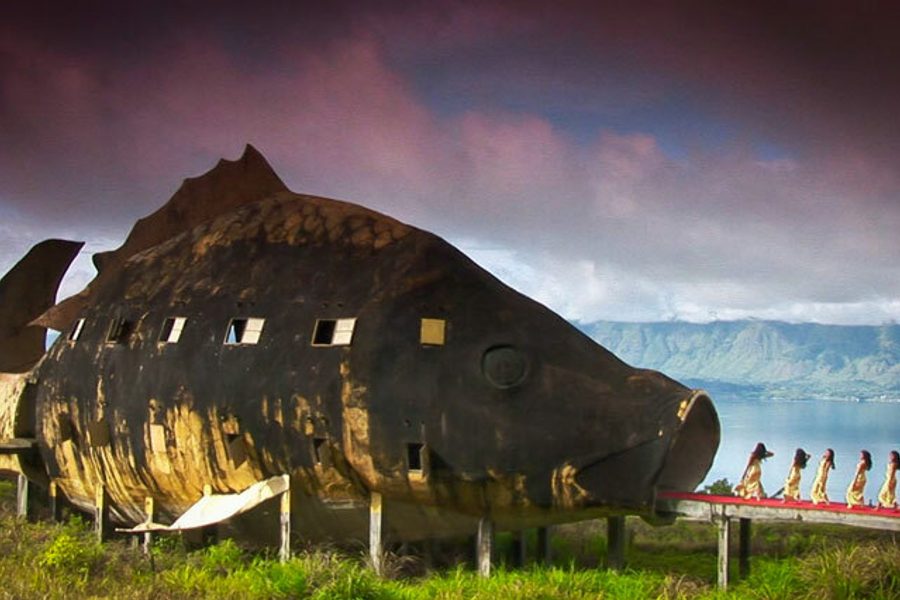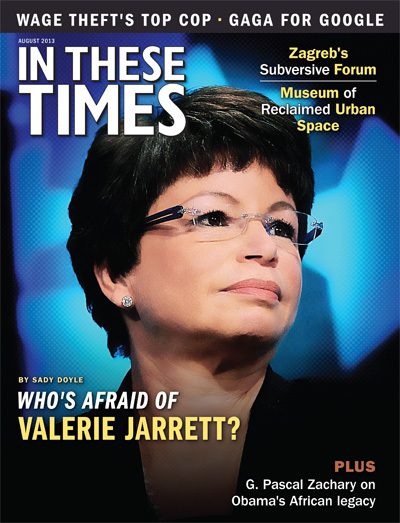Psychonesia
Mass murderers reenact their crimes for fun in Joshua Oppenheimer’s new documentary, The Act of Killing.
Michael Atkinson

The Act of Killing is a completely new order of eye-popping, forehead-slapping documentary. There’s never been a film quite like it, and the reasons are twofold: One, filmmaker Joshua Oppenheimer approaches his subject matter — Indonesia, its militia culture and its recent history — with wild inventiveness, allowing his subjects to be co-creators in the process, with startling and surreal results. Two, Indonesia itself. Whatever you may know about it from NPR or the New York Times won’t prepare you for what you see here of the country’s blood-soaked dementia.
The aging maniacs we meet are veterans of the mid-’60s unrest that first saw a failed coup attempt precipitate the toppling of President Sukarno, and then an anti-communist backlash that swept through the islands and gave ad hoc militias free reign to murder anyone suspected of leftish leanings. Today, Indonesia is a bustling and corrupt kleptocracy, and its militias survive as popular and powerful public institutions. The men who run them get in front of Oppenheimer’s camera (as well as on national TV) and proudly crow about how many people they “brutally” killed. (The film puts it at more than a million.) Beheadings, drownings, systematic strangulations — these famous codgers remain “gangsters,” an Indonesian use of the term that they say translates in English to “free men.” The nation’s entire security infrastructure, protecting its industries and government and emitting nonstop propaganda, is founded on reservoirs of blood, and is still run like the Mob.
But Oppenheimer doesn’t stop there. He recognizes immediately the self-glorifying aspects of the culture and the native love of American movies, and from the outset invites his blithely life-loving subjects to help shape the film by literally reenacting scenes of torture and mass murder for the camera. Paramilitary legends Anwar Congo (who dyes his white hair black, so as to resemble his younger self), Adi Zukladry and Herman Koto “play” themselves in their youthful butchering days but also start playing victims, too, covered in clumsy gore makeup.
Recollections frequently disrupt the scenes, which are sometimes faithful to the memories of massacres and sieges, and sometimes movie-genre fanciful. The killers critique their own performances afterwards, often asking for a reshoot. Using a local TV studio, Oppenheimer films them in a variety of styles: There’s a full-on noir episode, with fedoras and silk suits, and even a Western, visualized like a campy mix of Sergio Leone and John Waters. Koto, a vast and vain pig of a man, packs himself into sequined nightclub drag at every opportunity, and Oppenheimer rises to the occasion, peppering the film with luridly colored sub-Bollywood dance numbers that, given the context, make your jaw drop.
In a film focused on death squad cutthroats and not their victims, Congo and his cohort become the movie stars they always felt they should be. But of course, outside of their propagandized bell jar, the playacting hijinks are a terrifying absurdity. No wonder both Werner Herzog and Errol Morris stepped up as executive producers to make sure this wild document made it into American theaters. There is a tradition here — Oppenheimer is clearly walking the less-traveled path of pioneering ethnographic filmmaker Jean Rouch, who as early as 1958’s Moi, un Noir was critiquing post-colonial inequity by letting African workers “control” his films’ stories and thrusts.
But what Oppenheimer has come up with is altogether different: a wide-eyed plunge into the legacy of totalitarian bloodshed that’s just as fantastically oblivious and self-obsessed as Hollywood itself. The Act of Killing is never less than stylistically self-conscious — a late and lavish reenactment of the burning of a village is suddenly shot by Oppenheimer in gritty, camp-free terms, and the impact is chilling. Redefining cognitive dissonance for the new century, the movie is a political high-wire act, with more than half of its crew (including a co-director) listed as “Anonymous” in the credits. Reportedly, its release in Indonesia is igniting a cultural demand for rehistoricization and justice. Elsewhere, what the film says about movies, self-deception, and common mass bloodletting should merely steal our sleep.









